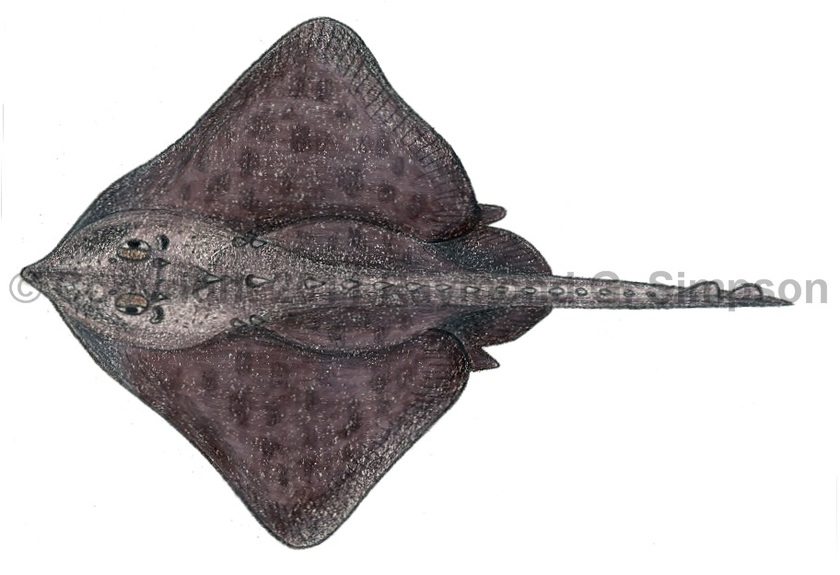
Common Name
Starry Skate
Year Described
Donovan, 1808
Identification
Body relatively thick and heavy. Disk diamond-shaped with a concave anterior margin (more so in males). Snout fairly short. Rostral cartilage stiff. Eyes small. Pectoral fins angular to bluntly rounded. Pectoral skeleton does not reach snout tip, leaving a semi-translucent area adjacent to rostral cartilage. Anterior pelvic fin lobe much smaller than the posterior lobe and separated by a shallow notch. Tail is thickened, about 76% of TL, and has skin folds on both sides. There are two dorsal fins, separated from each other by a distance less than first dorsal base. The caudal fin is very small. Upper jaw with 38-40 tooth rows. Clasper very stout, short, and broad.
Body covered with dermal denticles dorsally. Ventrum smooth. There are around 3 orbital thorns. There are 2-3 scapular thorns. There are 1-2 nuchal thorns. The abdomen and tail have a row of 13-17 thorns. Body thorns are very large, especially in young, with conspicuous stellate bases. Scattered small thorns on rest of body, including malar, alar patches (male), snout, base of pectoral fin, and bands on either side of tail. There are 0-1 thorns between the dorsal fins.
Color
Dorsum usually uniformly brown with faint marbling or blotching. Thorns slightly paler. Sometimes with small black speckles. Ventrum whitish with pale gray disk margins.
Size
Maximum size to 111cm TL.
Habitat
Found at a wide variety of depths (25-1400m), but more common in shallower waters. More common in shallower water than the Arctic Skate or Jensen's Skate. Captured in deeper water further south.
Range
Northwestern Atlantic: from Arctic Canada and Greenland to Cape Hatteras, NC.
References
Last, P.R., White, W.T., Carvalho, M.R. de, Séret, B., Stehmann, M.F.W & Naylor, G.J.P (Eds.). 2016. Rays of the World. CSIRO Publishing, Melbourne.
Other Notes
This species has much fewer thorns than other North Atlantic Amblyraja but the thorns are long and spectacular, especially in younger specimens.